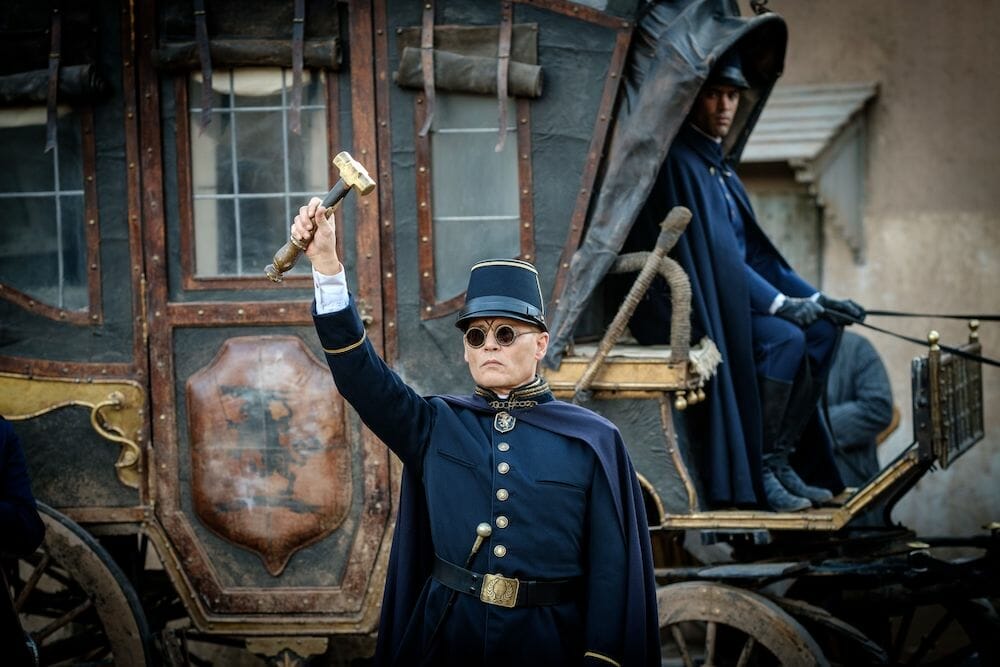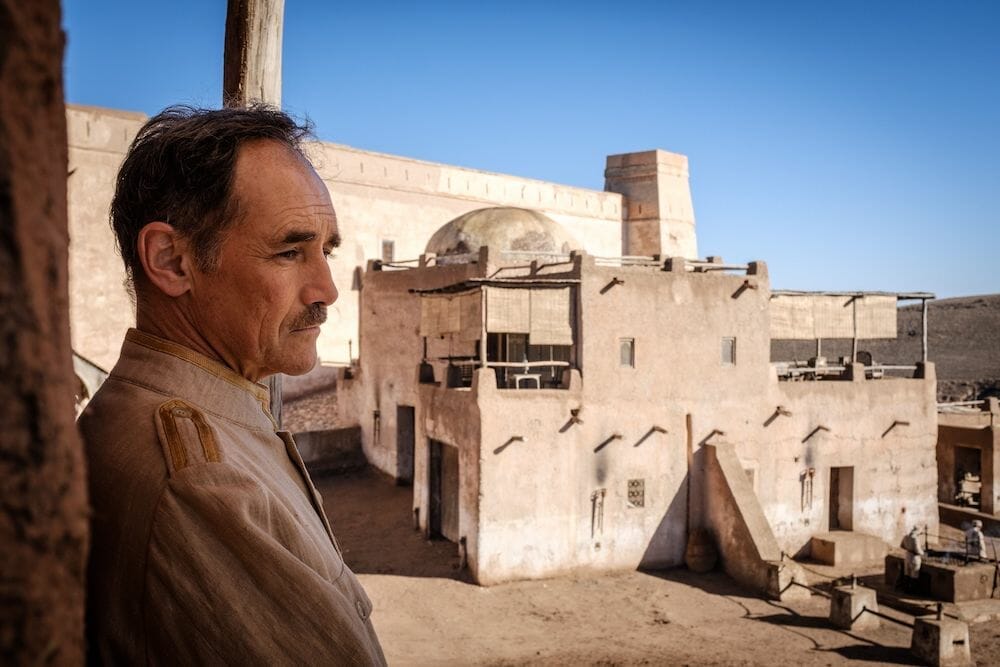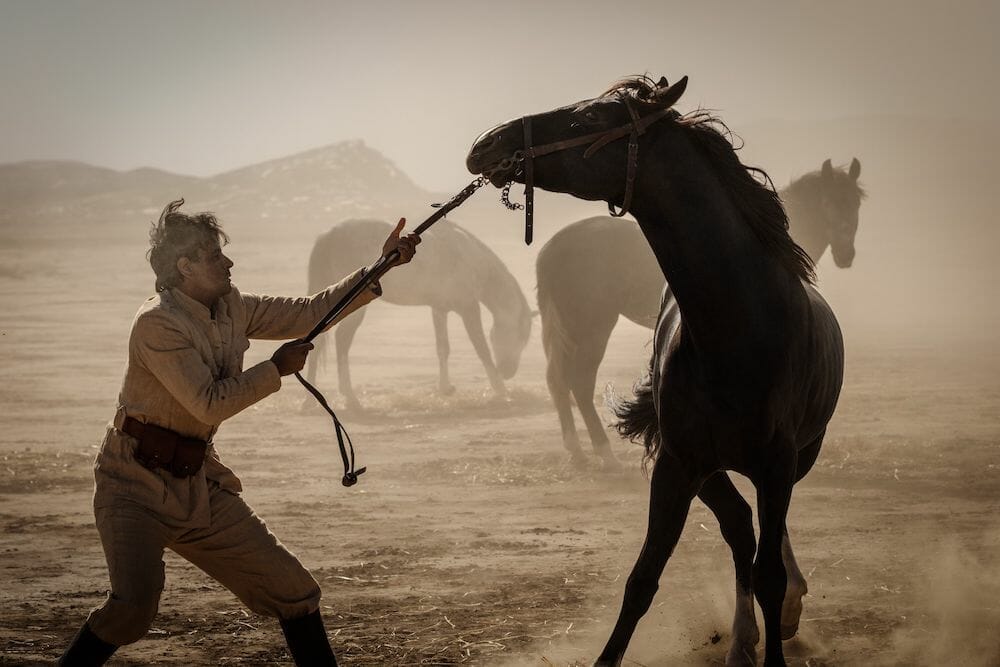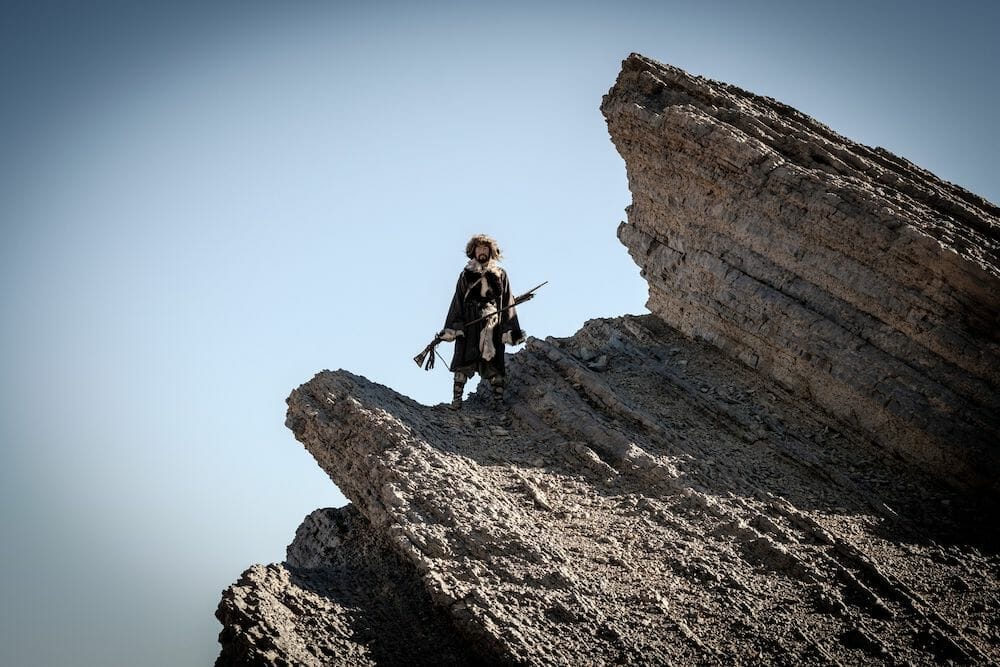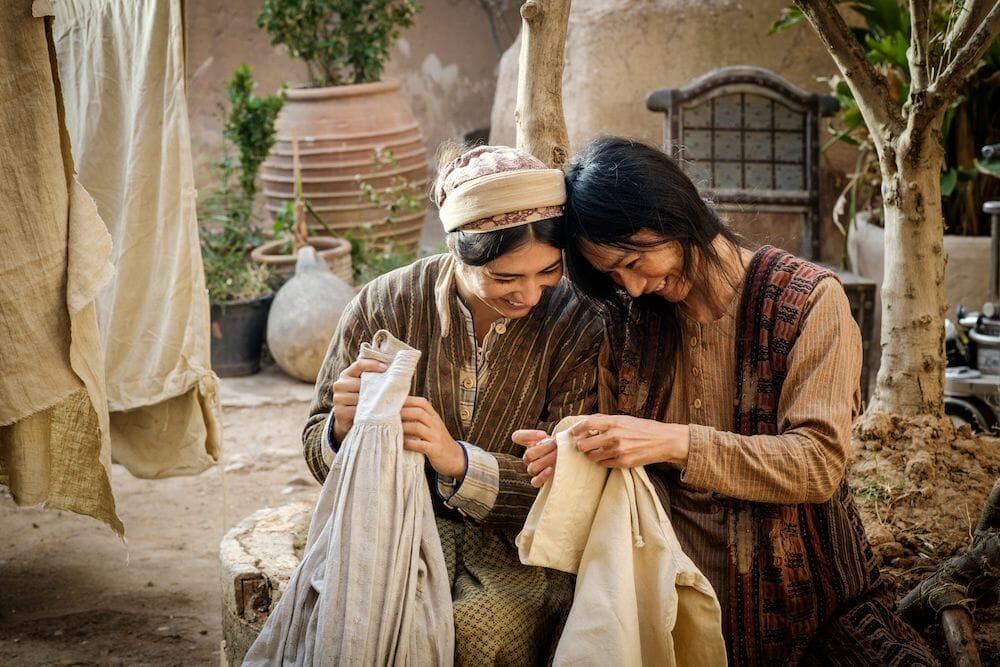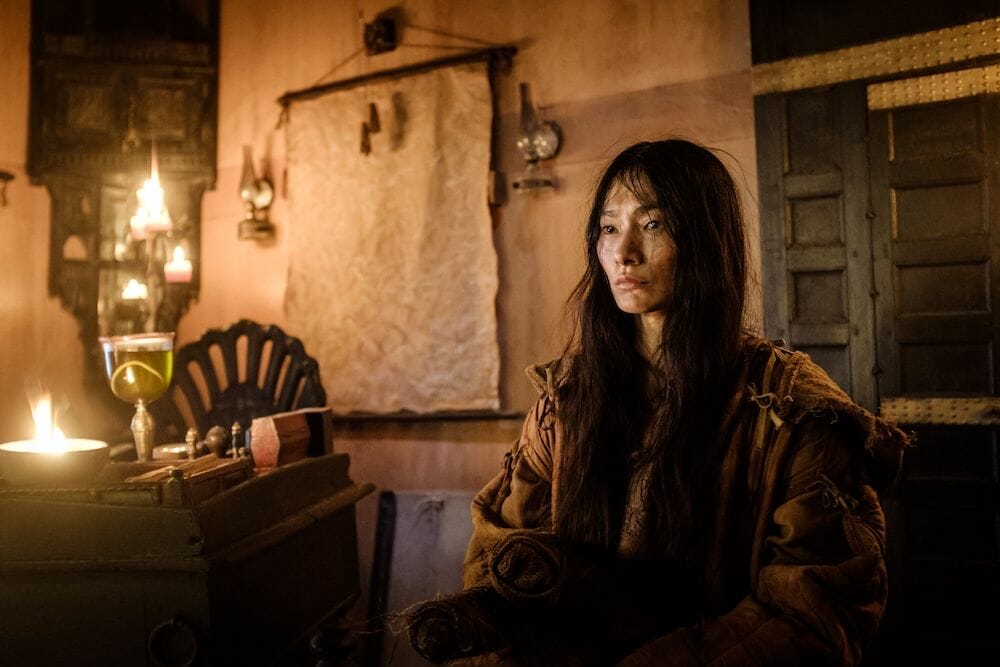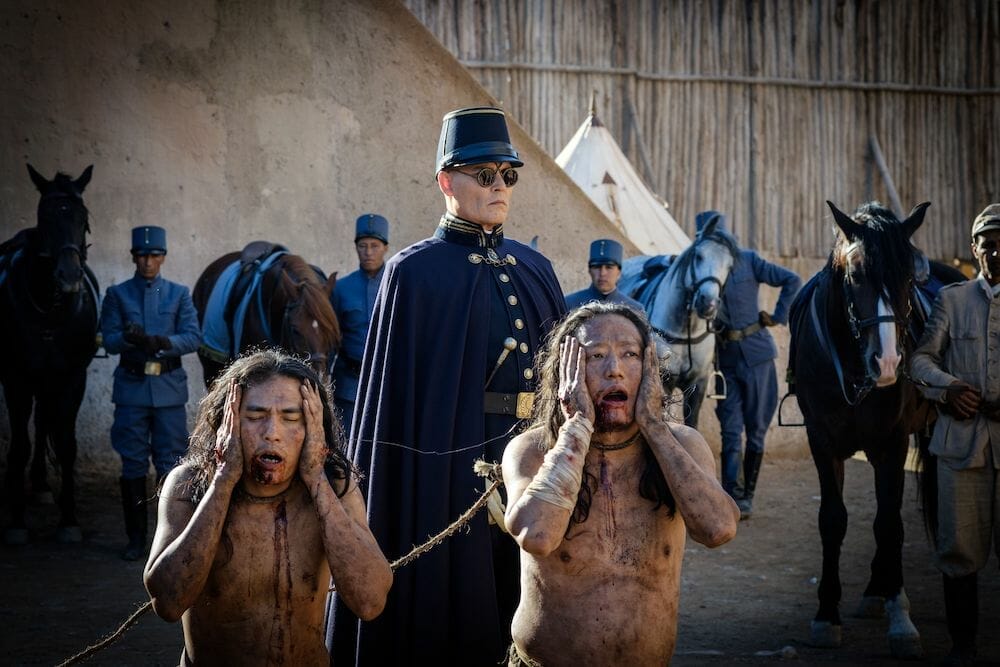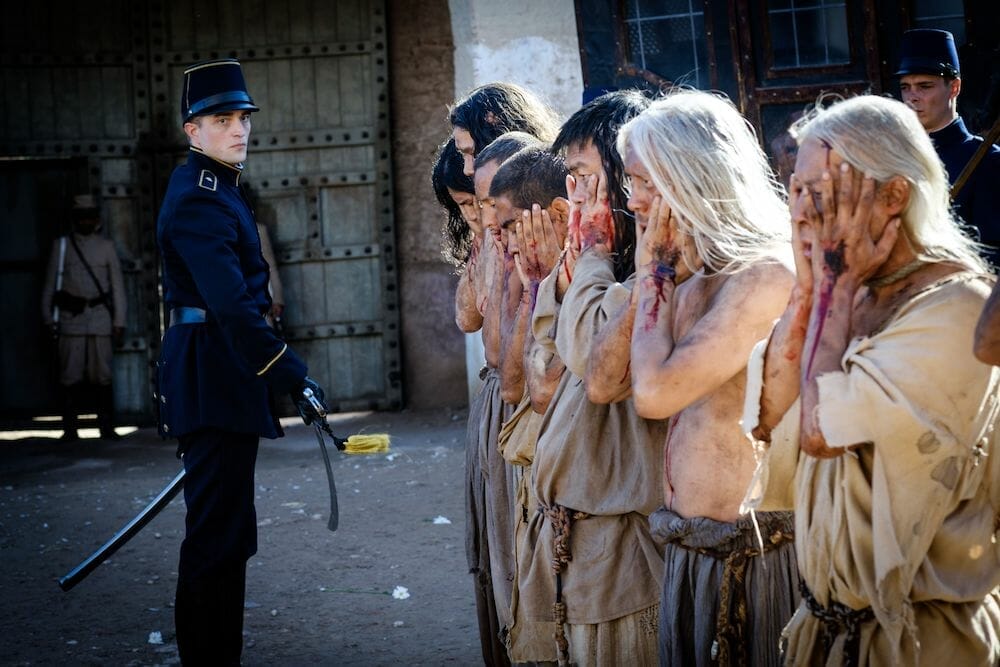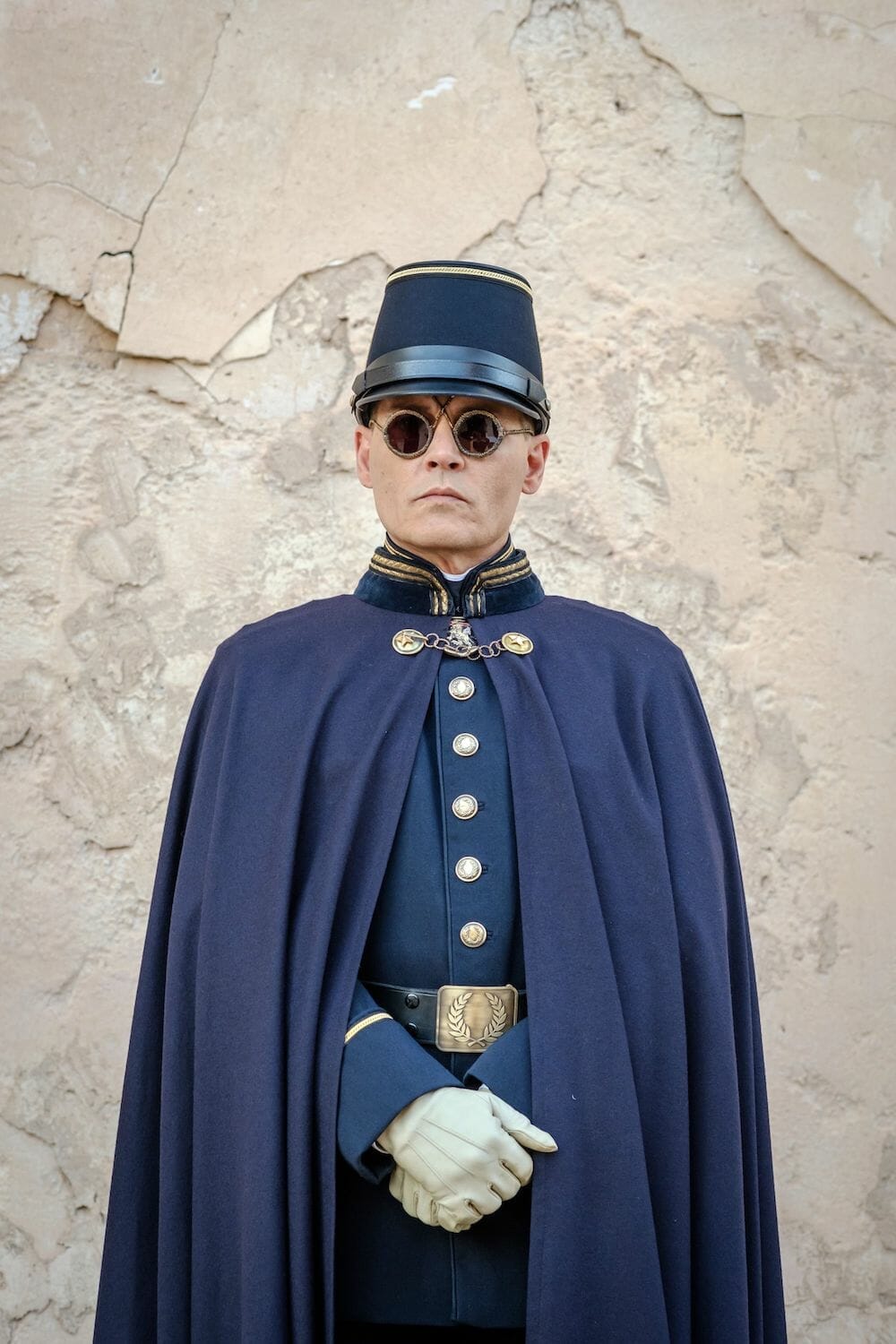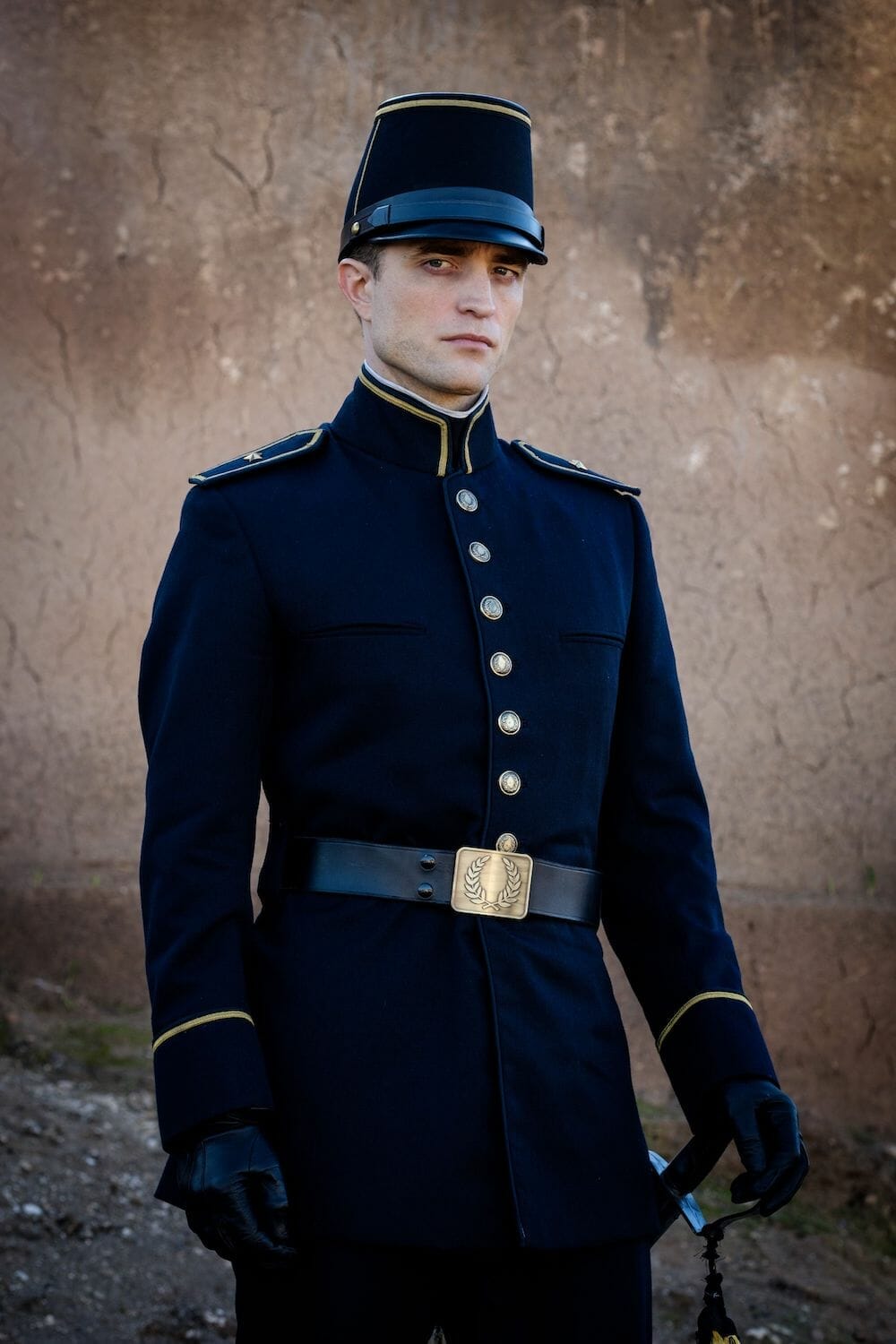Waiting for the Barbarians opens with arid grasslands encompassed by the snow-tipped mountain ranges of Central Asia. Situated on this infertile land is an adobe settlement. Napping guards, clothed in the tones of their sand-cloaked surroundings, line the battlements of the town’s gate. Inside the adobe buildings, an old man with a gentle countenance writes at his desk. Like his restful guards, his uniform and skin are weathered by the arid atmosphere.
The settlement too, blends in many ways with its surroundings. The unpaved, sandy town square displays a mixture of indigenous peoples and White townsfolk. Together with the Magistrate, we watch Mongols shake olive trees; collecting, counting and recording the fruits of their harmonious labor. Later, in a brilliantly lit desert terrain, the Magistrate gathers artifacts from workers as they silently sift through upturned soil. The Magistrate dedicates candlelit nights in his study restoring these artifacts; his adobe office is adorned with such specimens as inscribed bones, tapestries, silver boxes and time-stained parchments. These moments along with the rudimentary conversations he determinedly attempts with incarcerated barbarians, underscore the touching nature of our soft-spoken protagonist’s compassion for the Mongols.
Unbeknownst to the restful settlement, a dark presence is quickly descending upon them. A pale, pox marked Colonel Joll, played by Johnny Depp, has traveled great lengths from the outpost’s distant imperial headquarters. Dressed pristinely in midnight blue and gold regalia, a sweeping cape and dark glasses, we see the Colonel’s attention mainly on the superficial manners of a civilized meal – that is, when he isn’t incarcerating nomads and directing their abuse. He hides his eyes behind opaque and outlandish glasses; the bronze frames of the black lenses meeting between his eyebrows and extending an X between his eyebrows. In more ways than one, Depp, his dark-suited men, umber carriage and chestnut Arabian horses all stand in intolerable contrast to the steppe, Rylance, and his men.
WAITING FOR THE BARBARIANS Captures Man’s Darkest Descent
Over time, we watch as the palette of our film turns from ashy neutrals to dark obscurity. As the seasons pass and snow blankets the ground, filth spreads like an insidious virus. Likewise, the story moves to that darkest place where gross inhumanity to the other is the norm. Living prisoners live amongst bodies. Men have bandages over seeping orifices; excrement blackened women hold distressed children while tending to the sick and injured among them.
Expect to see sordid in all its permutations. Prepare also for an ending that will shock you and like all good dramas, leave you in suspense.
If you enjoy period dramas full of emotional weight, sweeping scores and compelling performances, this film is for you. The film will also appeal to those who appreciate allegories on colonialism, apartheid, and anyone interested in exploring the – vastly unexplored by Western media – region of Central Asia.
RECOMMENDED
Nominate this for The Picture This Post BEST OF 2021???
Click Readers' Choice
Want to see who won the Picture This Post READERS’ CHOICE competition last year?
WATCH THIS SHORT VIDEO—
Cast:
Mark Rylance as the Magistrate
Johnny Depp as Colonel Joll
Robert Pattison as Officer Mandel
Gana Bayarsaikhan as The Girl
Creative Team:
Written by J.M. Coetzee
Directed by Ciro Guerra
Music by Giampiero Ambrosi
Cinematography by Chris Menges
For more information on where to screen the film and to watch the film’s trailer, visit the Waiting for Barbarians page on Samuel Goldwyn Films.
Images Courtesy of AMBI Media Group.

About the Author: Camille Aguilar
Camille is a senior at the University of Chicago where she studies Literature and Philosophy. There, she is a reporter for the Maroon, as well as a photographer for the student run culinary magazine: Bite. Her activism extends largely towards youth education, and she is currently an organizing executive of MUNUC the Model United Nations conference put on by UChicago students for over 1,500 international high school students annually. After college, Camille plans to continue writing creatively and professionally as she pursues a career in international human rights reform.

